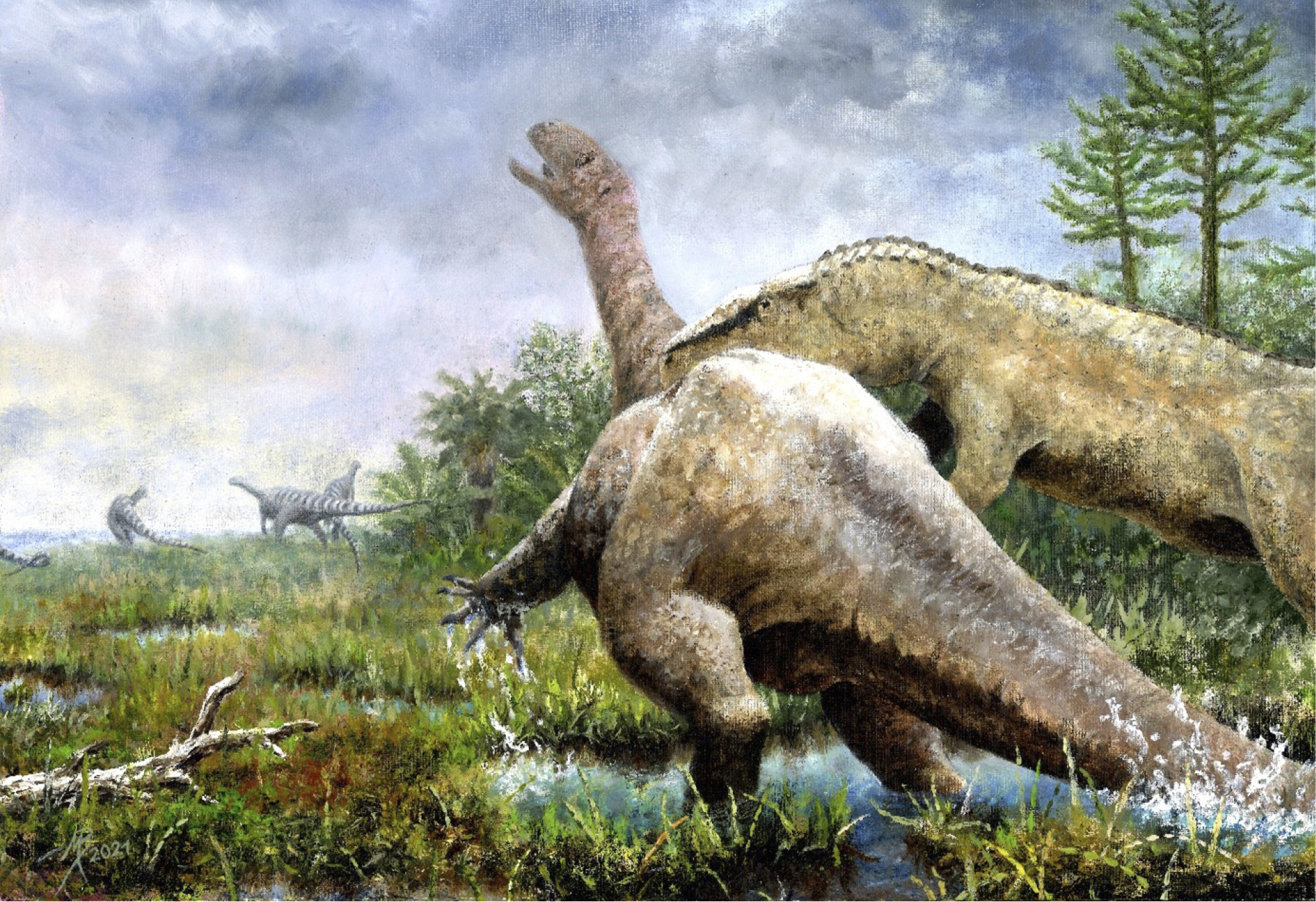
|
||
|
Reconstruction of the last moments in the life of Tuebingosaurus maierfritzorum (collection number of the painting: GPIT-PV-41827). The cortical bone on the left side of the fossil is fractured into flakes, which can be explained if the carcass was exposed over a long time on the mud, two to four years, before being buried – in the reconstruction, the animal will fall to its right body side. The reconstruction shows the animal sinking in a mud trap, attacked by a rauisuchian, Teratosaurus Meyer, 1861, which has also been found in the Trossingen Formation in Baden-Württemberg (Brusatte et al. 2009). In the background, a herd of P. trossingensis runs away from the scene. The flora in the swamp is reconstructed based on fossils from the Germanic basin, with shoots of horsetails and ferns covering the swamp and a forest comprising cycads (Taeniopteris Brongniart, 1828), lycophytes (Lepacyclotes Emmons, 1856) and coniferous plants (Brachyphyllum Brongniart, 1828) (Kustatscher et al., 2018). |